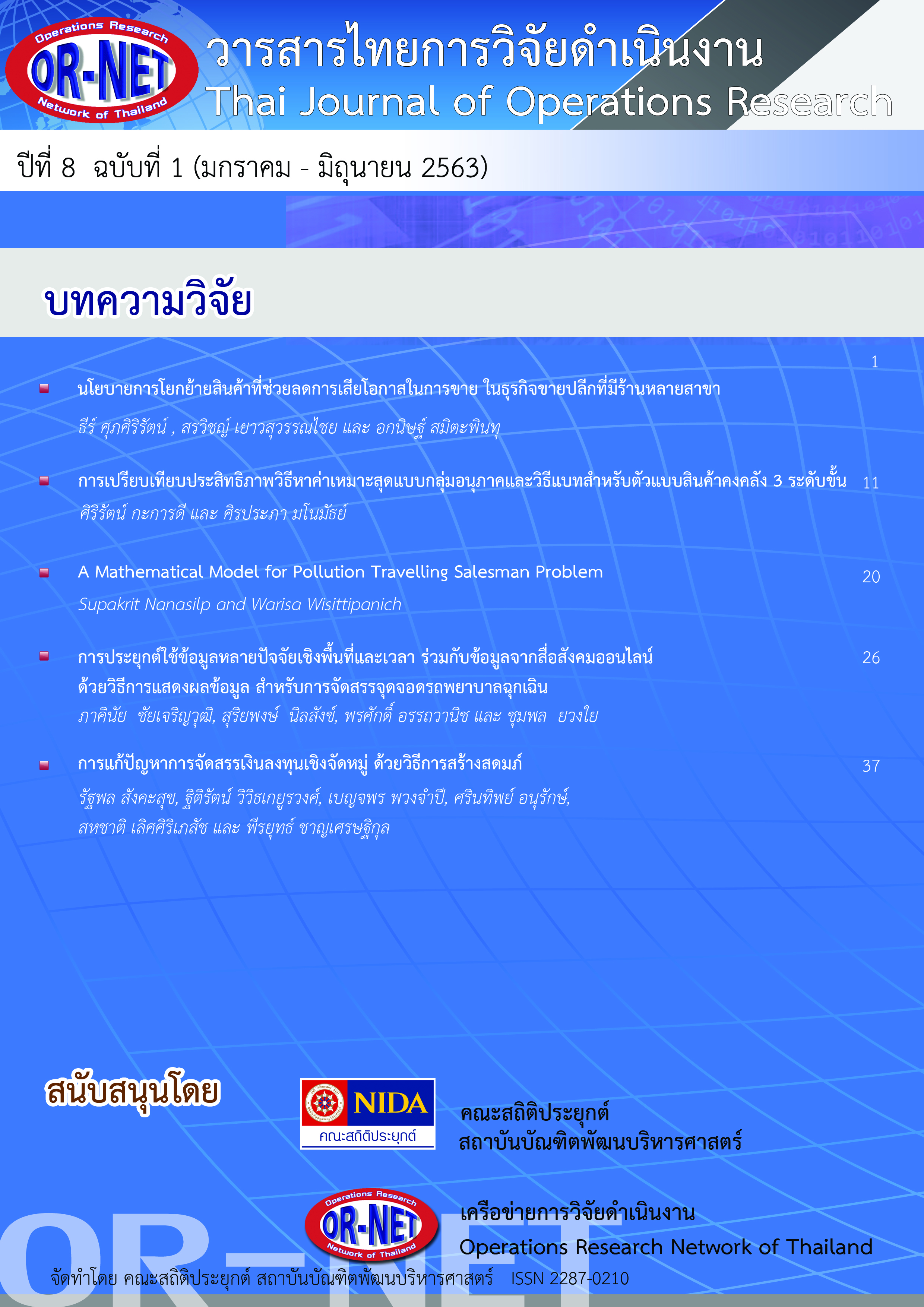Lateral Transshipment Policy for Reducing Lost Sale for Multiple Retail Stores
Keywords:
Lateral Transshipment, Simulation modelingAbstract
In general, a retailer will have many stores in order to increase service areas for customers. When a retail store lacks of a product, the retailer owner might have a policy to transfer the product available from other stores to the lacking store. This transfer is known as the lateral transshipment. Since it is more time consuming to reorder the product from suppliers than to transfer from other stores. Without lateral transshipments, the retailer could face with lost sales because some customers might not be able to wait for long time. Recently, Hochmuth and Kochel [1] studied the appropriate policy for the lateral transshipment for retail businesses using simulation technique. In this research, we aims to extend the study of Hochmuth and Kochel [1] by also considering the limited storage space of stores, and to study the lateral transshipment policy that can reduce lost sale when lead time from suppliers changes. The result of our simulation model using Arena indicated the policy that allows all possible lateral transshipments among all stores can significantly reduce lost sale. When lead time is shorter, the policy with all possible transshipment has the higher reduction of lost sale. When lead time is longer, this policy has the lower reduction of lost sale.
References
[2] Liu, H., 2016, “Simulation of lateral transshipment in order to delivery under e-commerce environment”, International Journal of Simulation and Process Modelling, Vol. 11, No. 1, pp. 51-65.
[3] วิทยา สุหฤทดารง, 2546, ลอจิสติกส์และการจัดการโซ่อุปทาน อธิบายได้ ง่ายนิดเดียว, ซีเอ็ดยูเคชั่น, กรุงเทพฯ, หน้า 1-10.
[4] แก้วปั้น อมตเวทย์, 2548, การพัฒนาวิธีการสั่งร่วมกรณีอุปสงค์ไม่คงที่และมีข้อจำกัดด้านงบประมาณและทรัพยากร, วิทยานิพนธ์ปริญญาวิศวกรรมศาสตรมหาบัณฑิต สถาบันเทคโนโลยีพระจอมเกล้าพระนครเหนือ, กรุงเทพฯ.




